#Earth Science
Text

whenever i can't picture dinosaurs existing i just humble myself by looking at birds alive today. what the actual fuck is that thing
#just look into the eyes of flamingos and you can see the dinosaur#biology#science#stem#sciblr#paleontology#zoology#fossils#prehistoric#dinosaurs#earth science#geoscience#dinosaur#paleoblr#cretaceous#sauropod#geology#prehistoric animals#birds#birdblr
4K notes
·
View notes
Text
NASA Inspires Your Crafty Creations for World Embroidery Day
It’s amazing what you can do with a little needle and thread! For #WorldEmbroideryDay, we asked what NASA imagery inspired you. You responded with a variety of embroidered creations, highlighting our different areas of study.
Here’s what we found:
Webb’s Carina Nebula
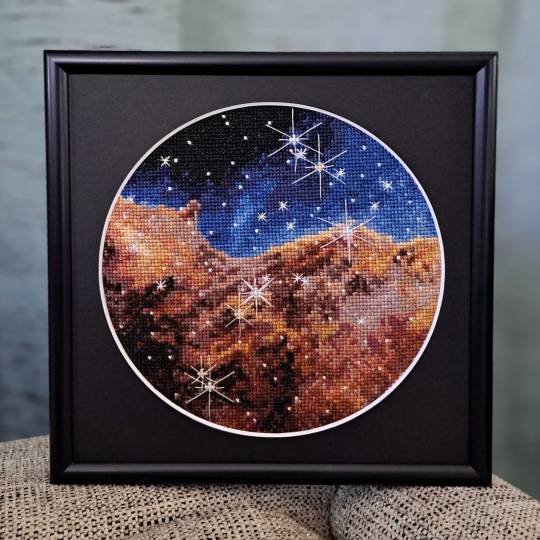
Wendy Edwards, a project coordinator with Earth Science Data Systems at NASA, created this embroidered piece inspired by Webb’s Carina Nebula image. Captured in infrared light, this image revealed for the first time previously invisible areas of star birth. Credit: Wendy Edwards, NASA. Pattern credit: Clare Bray, Climbing Goat Designs
Wendy Edwards, a project coordinator with Earth Science Data Systems at NASA, first learned cross stitch in middle school where she had to pick rotating electives and cross stitch/embroidery was one of the options. “When I look up to the stars and think about how incredibly, incomprehensibly big it is out there in the universe, I’m reminded that the universe isn’t ‘out there’ at all. We’re in it,” she said. Her latest piece focused on Webb’s image release of the Carina Nebula. The image showcased the telescope’s ability to peer through cosmic dust, shedding new light on how stars form.
Ocean Color Imagery: Exploring the North Caspian Sea
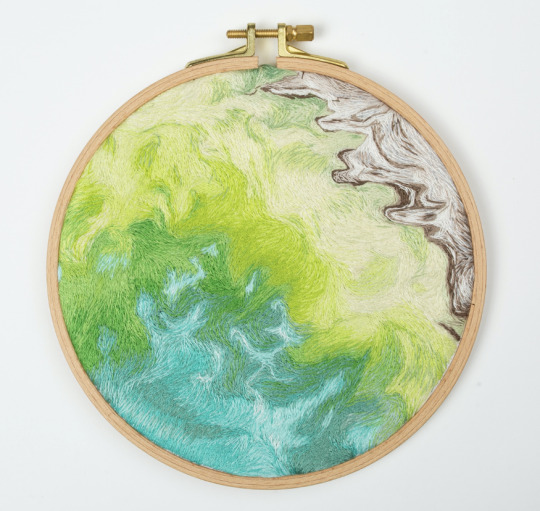
Danielle Currie of Satellite Stitches created a piece inspired by the Caspian Sea, taken by NASA’s ocean color satellites. Credit: Danielle Currie/Satellite Stitches
Danielle Currie is an environmental professional who resides in New Brunswick, Canada. She began embroidering at the beginning of the Covid-19 pandemic as a hobby to take her mind off the stress of the unknown. Danielle’s piece is titled “46.69, 50.43,” named after the coordinates of the area of the northern Caspian Sea captured by LandSat8 in 2019.

An image of the Caspian Sea captured by Landsat 8 in 2019. Credit: NASA
Two Hubble Images of the Pillars of Creation, 1995 and 2015
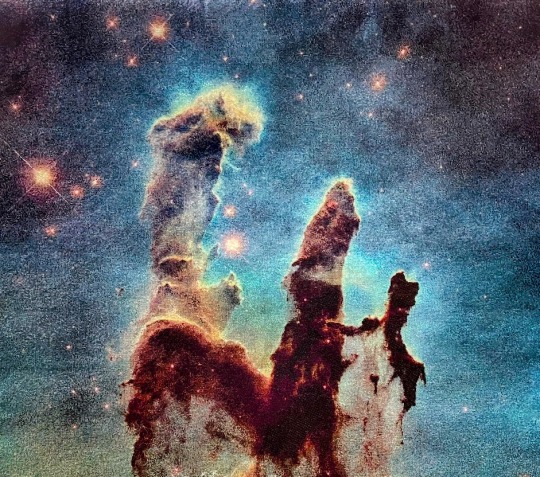
Melissa Cole of Star Stuff Stitching created an embroidery piece based on the Hubble image Pillars of Creation released in 1995. Credit: Melissa Cole, Star Stuff Stitching
Melissa Cole is an award-winning fiber artist from Philadelphia, PA, USA, inspired by the beauty and vastness of the universe. They began creating their own cross stitch patterns at 14, while living with their grandparents in rural Michigan, using colored pencils and graph paper. The Pillars of Creation (Eagle Nebula, M16), released by the Hubble Telescope in 1995 when Melissa was just 11 years old, captured the imagination of a young person in a rural, religious setting, with limited access to science education.

Lauren Wright Vartanian of the shop Neurons and Nebulas created this piece inspired by the Hubble Space Telescope’s 2015 25th anniversary re-capture of the Pillars of Creation. Credit: Lauren Wright Vartanian, Neurons and Nebulas
Lauren Wright Vartanian of Guelph, Ontario Canada considers herself a huge space nerd. She’s a multidisciplinary artist who took up hand sewing after the birth of her daughter. She’s currently working on the illustrations for a science themed alphabet book, made entirely out of textile art. It is being published by Firefly Books and comes out in the fall of 2024. Lauren said she was enamored by the original Pillars image released by Hubble in 1995. When Hubble released a higher resolution capture in 2015, she fell in love even further! This is her tribute to those well-known images.
James Webb Telescope Captures Pillars of Creation

Darci Lenker of Darci Lenker Art, created a rectangular version of Webb’s Pillars of Creation. Credit: Darci Lenker of Darci Lenker Art
Darci Lenker of Norman, Oklahoma started embroidery in college more than 20 years ago, but mainly only used it as an embellishment for her other fiber works. In 2015, she started a daily embroidery project where she planned to do one one-inch circle of embroidery every day for a year. She did a collection of miniature thread painted galaxies and nebulas for Science Museum Oklahoma in 2019. Lenker said she had previously embroidered the Hubble Telescope’s image of Pillars of Creation and was excited to see the new Webb Telescope image of the same thing. Lenker could not wait to stitch the same piece with bolder, more vivid colors.
Milky Way

Darci Lenker of Darci Lenker Art was inspired by NASA’s imaging of the Milky Way Galaxy. Credit: Darci Lenker
In this piece, Lenker became inspired by the Milky Way Galaxy, which is organized into spiral arms of giant stars that illuminate interstellar gas and dust. The Sun is in a finger called the Orion Spur.
The Cosmic Microwave Background
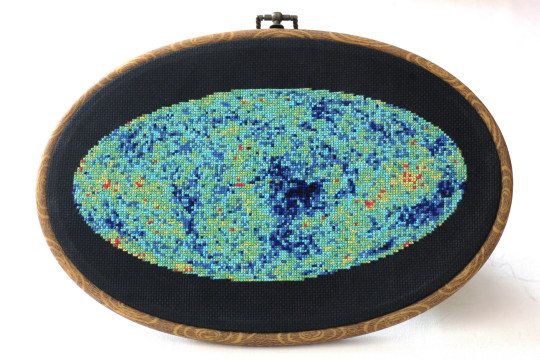
This image shows an embroidery design based on the cosmic microwave background, created by Jessica Campbell, who runs Astrostitches. Inside a tan wooden frame, a colorful oval is stitched onto a black background in shades of blue, green, yellow, and a little bit of red. Credit: Jessica Campbell/ Astrostitches
Jessica Campbell obtained her PhD in astrophysics from the University of Toronto studying interstellar dust and magnetic fields in the Milky Way Galaxy. Jessica promptly taught herself how to cross-stitch in March 2020 and has since enjoyed turning astronomical observations into realistic cross-stitches. Her piece was inspired by the cosmic microwave background, which displays the oldest light in the universe.

The full-sky image of the temperature fluctuations (shown as color differences) in the cosmic microwave background, made from nine years of WMAP observations. These are the seeds of galaxies, from a time when the universe was under 400,000 years old. Credit: NASA/WMAP Science Team
GISSTEMP: NASA’s Yearly Temperature Release

Katy Mersmann, a NASA social media specialist, created this embroidered piece based on NASA’s Goddard Institute for Space Studies (GISS) global annual temperature record. Earth’s average surface temperature in 2020 tied with 2016 as the warmest year on record. Credit: Katy Mersmann, NASA
Katy Mersmann is a social media specialist at NASA’s Goddard Space Flight Center in Greenbelt, Md. She started embroidering when she was in graduate school. Many of her pieces are inspired by her work as a communicator. With climate data in particular, she was inspired by the researchers who are doing the work to understand how the planet is changing. The GISTEMP piece above is based on a data visualization of 2020 global temperature anomalies, still currently tied for the warmest year on record.
In addition to embroidery, NASA continues to inspire art in all forms. Check out other creative takes with Landsat Crafts and the James Webb Space telescope public art gallery.
Make sure to follow us on Tumblr for your regular dose of space!
#NASA#creativity#fiber art#embroidery#art#art challenge#needlework#crafts#handmade#textile art#cross stitch#stitching#inspiration#inspo#Earth#Earth science#Hubble#James Webb Space Telescope#climate change#water#nebula#stars
6K notes
·
View notes
Text
Reblog this and put in the tags what country you’re from and all the science classes you took in high school (for non Americans that’s approximately when you’re 14, 15, 16, and 17 years old)
13K notes
·
View notes
Note
Hi I saw your reply on a post about weird things people believe in (in terms of science) and you wrote about that unless one stands on a volcano, its solid rock down to the outer core and I had to google it because I was always taught that THE MANTLE IS LIQUID not by movies but by SCHOOL and now I learn it's a case of 'technically-' and I'm shaking so, uh, thanks.
Hello! Sorry I sat on this, I wanted to respond with this earth structure diagram I've been working on. I think most public schools in the US do a terrible job of teaching geology and it actually drives me insane lol. Also, if learning the mantle is not liquid blew your mind, then this is gonna blow your mind too...
The mantle is green!
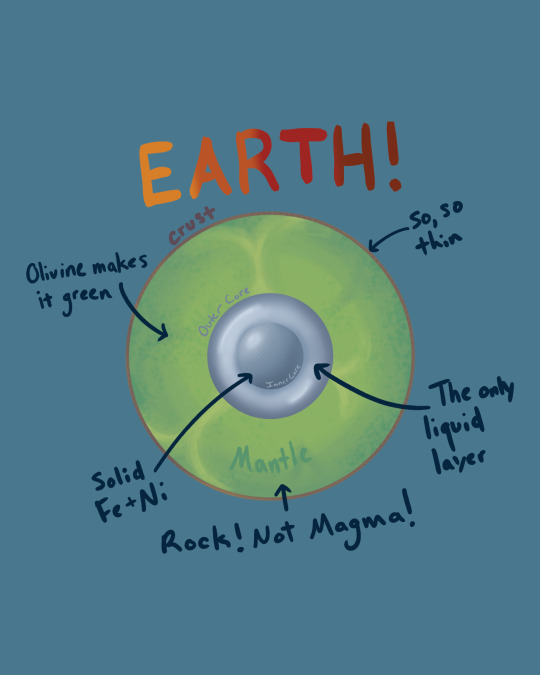
This is a pretty quick and dirty diagram, but I wanted to show the earth in a way that we don't usually think about (usually it just looks "hotter" as you go toward the center). Here are some earth facts I wish everyone knew:
The Crust - relatively super thin, very brittle, mostly granite, and things get weird where the crust transitions to mantle and where plates collide (might make a second post on that).
The Mantle - primarily made up of a rock called peridotite, which has lots of olivine in it and is blasphemously green. Also the mantle is pretty much all rock, maybe a little magma here and there, but it's pretty minor. But because all that rock is really, really hot it can deform plastically and it actually undergoes convection (it moves!) Mantle upwelling (shown in that lighter green) is actually a huge driver of plate tectonics.
The Core - made of an iron and nickel alloy, the outer core is liquid (because it's so hot) and the inner core is solid (because the pressure is so high). This dual metallic core generates Earth's magnet field (our planet is one big magnet). We also suspect that inner core has Widmanstätten patterns, similar to those we find in meteorites.
So yeah, hoped you liked some more earth facts 😅
#geology#rocks#minerals#earth#science#earth science#planets#probably gonna put this on redbubble?#my art#geolife
5K notes
·
View notes
Text

Why is the mid-atlantic ridge a thing you can review on Google?
493 notes
·
View notes
Text

I made another paleontology meme
1K notes
·
View notes
Text

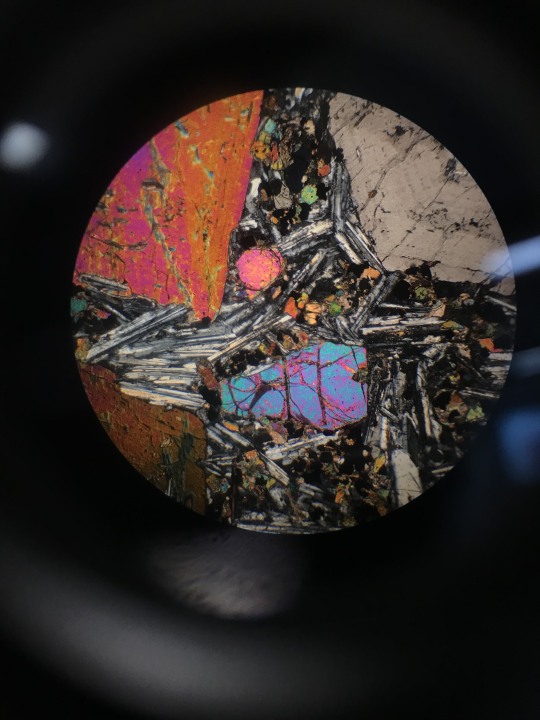
two pretty views on gabbro thin section in crossed polarised light
#hiyutekivigil#personal#rocks#gobbro#thin section#cpl#crossed polarised light#microscope#earth science#geology#university#studyblr#study inspo#academia#academia aesthetic#stem#stem academia#igneous rock#volcanoes
413 notes
·
View notes
Text
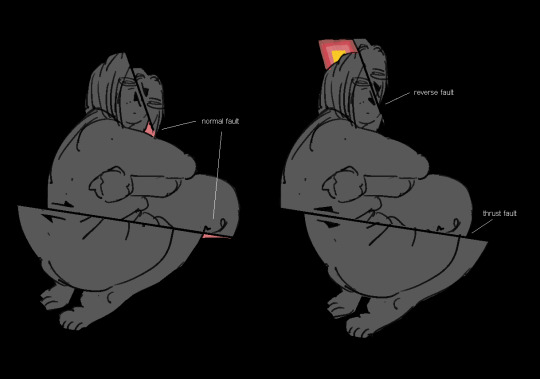
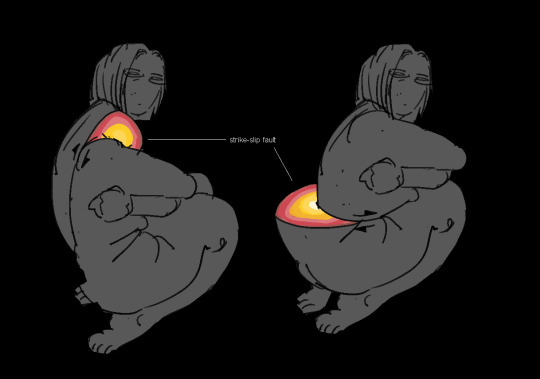
151 notes
·
View notes
Text
In order to limit the increase in global average temperature to 1.5°C, it is essential to drastically reduce carbon dioxide (CO2) emissions in the atmosphere. This would mean not exploiting most of the existing coal, conventional gas and oil energy resources in regions around the world, according to research led by the University of Barcelona and published in the journal Nature Communications.
The new article presents the atlas of unburnable oil in the world, a world map designed with environmental and social criteria that warns which oil resources should not be exploited to meet the commitments of the Paris Agreement signed in 2015 to mitigate the effects of climate change.
Continue Reading.
135 notes
·
View notes
Text

Mount Roraima is one of the oldest geological formations on Earth, with their “tepuis” estimated at over 2 billion years old. The highest tepui plateau, Mount Roraima, is famous for its prehistoric ecology, which sustains plants and animals found nowhere else in the world.
652 notes
·
View notes
Photo

Eratosthenes of Cyrene
He is best known for being the first person known to calculate the circumference of the Earth, which he did by using the extensive survey results he could access in his role at the Library; his calculation was remarkably accurate. He was also the first to calculate Earth's axial tilt, which has also proved to have remarkable accuracy. He created the first global projection of the world, incorporating parallels and meridians based on the available geographic knowledge of his era..
Read more: https://en.wikipedia.org/wiki/Eratosthenes
#Eratosthenes#ancient greece#ancient history#history#greece#geography#maps#earth science#Earth#science
1K notes
·
View notes
Text

#biology#sciblr#stem#science#paleontology#geology#geoscience#rocks#mineralogy#minerals#fossil#fossils#dinosaurs#dinosaur#paleoblr#prehistoric animals#prehistoric#earth science#triceratops#paleoart#paleomedia#dinos#stegosaurus
2K notes
·
View notes
Text

Space Craft! Make NASA-Inspired Creations for World Embroidery Day
It’s time to get crafty with some needle and thread. At NASA, we hope to inspire art of all kinds. To highlight #WorldEmbroideryDay on July 30, we want to know: does our imagery inspire you? Show us your art and we may feature it on social media.
How?
Search for a NASA image that inspires you. Here are a few places to get you started: Hubble, James Webb Space Telescope, Ocean Color, Landsat and Earth Observatory
Create. Over the years, we've seen a growing number of embroidered pieces that showcase our organization's research, especially with needlepoint.
Share your creation, along with the image it was inspired by, on social media using the hashtag #NASAEmbroidery. We will share selected pieces on July 30 for World Embroidery Day
Why?
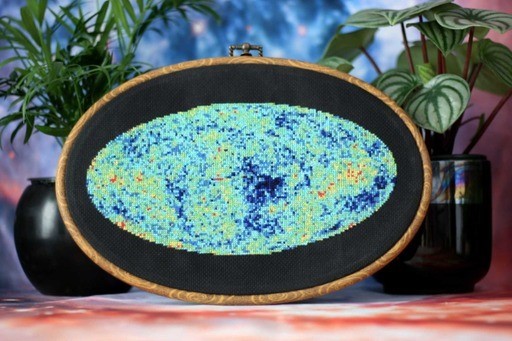
NASA imagery has many functions. From studying distant galaxies to tracking ocean health, our scientists use these images to not only monitor our home planet, but better understand life beyond our solar system.
Embroidery is an ancient craft that has experienced a revival over the years. It involves decorating fabric or other materials using a needle to apply thread or yarn. Have you recently taken up embroidery? What images are you inspired by? We’d love to see it.
Image Resources for #NASAEmbroidery Inspiration
NASA Images
Hubble Image Gallery
NASA’s Ocean Color Image Gallery
James Webb Space Telescope
Landsat Image Gallery
Create and Share Your #NASAEmbroidery
Take a picture of your piece and upload it to Twitter, Instagram, Tumblr or Facebook. Make sure you use the hashtag #NASAEmbroidery so we know that you are taking part in the event and make sure that your privacy permissions allow us to view your post.
If the piece catches our eye, we may share your work on NASA’s main social media accounts as well as theme-related ones. We may also feature your art in a NASA Flickr gallery and our Tumblr pages. We’ll contact you directly to grant us permission to feature your work. You can follow @NASA on Twitter, Instagram and Facebook for embroidery creations, which will be featured from July 30-Aug. 1
Make sure to follow us on Tumblr for your regular dose of space!
#art#art challenge#artistlife#artist#art inspiration#art inspo#Earth#Earth science#embroidery#crossstitch#JWST#Hubble#NASA
2K notes
·
View notes
Text
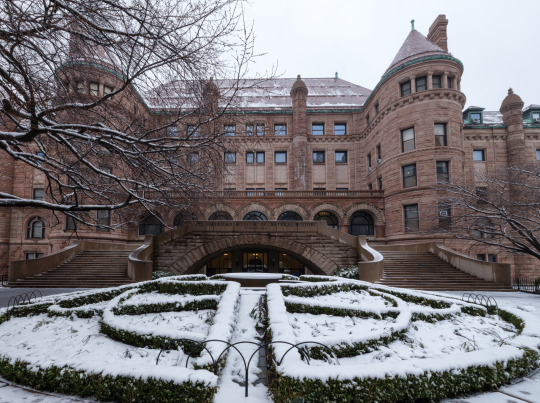
Do you know someone who is interested in teaching science? The Museum’s Master of Arts in Teaching Earth Science Residency Program (MAT ESRP) is a fully-funded, accredited degree-granting fellowship program—and application is open through January 16, 2024!
Learn to teach Earth and space science for grades 7-12 in New York. Benefits of the program include:
• A full-time, 15-month program
• $40,000 stipend for living expenses
• 100% employment rate post-graduation
• Experience teaching in schools
• Science coursework at a world-class museum, led by research scientists and teacher educators
Play your part in the intellectual, cultural, and social community of New York and inspire the next generation of scientists! Learn more or sign up for an information session.
188 notes
·
View notes
Text
Hey um. Bad news. We carbon dated your boyfriend. He fell into the carbon-14 and became a radioactive isotope formation. Yeah we're bombarding him with nitrogen from Earth's upper atmosphere. Sorry.
848 notes
·
View notes
Text
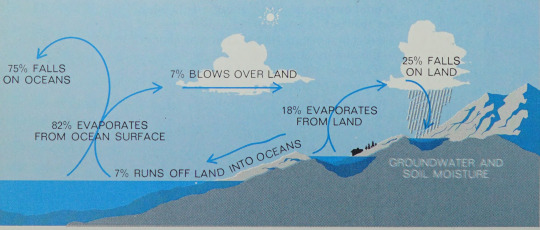
The hydrologic cycle. Earth Science. 1970.
Internet Archive
234 notes
·
View notes